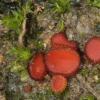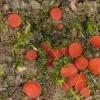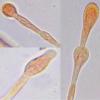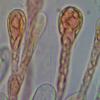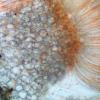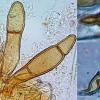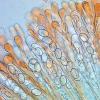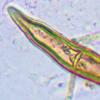
30-11-2025 12:53
 Edvin Johannesen
Edvin Johannesen
White short-stipitate apothecia found on thin twig

30-11-2025 10:47
 William Slosse
William Slosse
I recently found a collection of small Peziza sp.

27-11-2025 12:01
Thomas Læssøehttps://svampe.databasen.org/observations/10496727

27-11-2025 11:46
Thomas Læssøehttps://svampe.databasen.org/observations/10493918

17-09-2025 10:50
Heather MerryleesHi there!I am hoping for any advice on the identif

29-11-2025 08:40
 Andreas Millinger
Andreas Millinger
Hello,on a splintered part of a branch on the grou

28-11-2025 16:45
Nogueira HéctorNovember 23, 2025 Requejo de Sanabria (León) SPAI

25-11-2025 14:24
Thomas Læssøehttps://svampe.databasen.org/observations/10490522

27-11-2025 15:41
Thomas LæssøeSpores brownish, typically 4-celled; 26.8 x 2.4;

27-11-2025 11:31
Thomas LæssøeCollectors notes: Immersed ascomata, erumpent thro
 Hello,
Hello,I have been struggling to identify this Cheilymenia (I suppose it is Cheilymenia at least :-))
Description: Apothecia orange-red with outer surface dotted with hairs, old ones often almost bald, size up to 2,2 mm.
Microscopical description: Hymenium about 230 – 260 µm thick. Hypothecium indisctincly differentiated. Excipulum seems differentiated to me as medullary layer is composed of smaller cells than those in outer excipulum, and also some inflated hyphae. Outer excipulum consists of globose, elipsoid to angular thin walled cells that are quite strongly cyanophilous.
Asci cylindric, 180 – 240 x 12,5 – 16 µm, with usually 4,6 or 8 ascospores (rarely 2), others are aborted. Some of aborted ascospores are subglobose. Ascospores are uniseriate, elipsoid, 14,15 – 16,65 x 8,25 – 9,95 µm, Q = 1,69, seem almost smooth under light microscope to me when stained in tryptanblue or cotton blue in lactic acid without heating.
Paraphyses are septate, with variable shape, mostly with enlarged apex (8-11 µm), often with some moniliform parts, sometimes branched (mostly below, rarely above), containing orange substances.
There are light brown thick walled root germs on the margin. Lateral hairs are short (up to 250 µm), truncate or attenuate, mostly simple, sometimes bifurcate or rarely 3furcate, thick walled, with subacuminate to acumanite apex, sometimes lanceollate, light brown, apex sometimes hyaline.
Habitat and collection: on soil, but maybe mixed with dung, late autumn, elevation 525m, Czech Republic
Thank you in advance for your help
Honza
to me it looks rather like a Melastiza (Aleuria s. l.), particularily the hairs. The spores are perhaps not quite mature yet.
Regards
Till

thank you for your prompt reply. Melastiza should have rounded apex of hairs only (or not?). Here lateral hairs are pointed (see photo) and longer than those short obtuse ones.
I considered ascospores to be mature as at they posses a yellow refractive content when stained in trypanblue or cotton blue in lactic acid. Immature spores lacked the yellow contained and stained completely blue...
Honza

It's probably Scutellinia minutella. I have a work on this species on course.
Could you send me some apothecia ?
Beñat

thank you for your answer. I wrongly supposed it to be Cheilymenia, section Pseudoscutellinae ...
I can send you some... Please contact me by email to arrange it.
Honza

I have study your sending.
It's S. minutella. I have sent you a private mail.
We have a study on course with a publication (during this new year 2015) with René Dougoud. Please be patient to have all information on this species.
In fact, it seems to be rare but not ! We suspect that it's just a problem of "rare" prospection and edaphical and ecological conditions.
For example, here, in Pyrenees, this species in more common than S. barlae, which is common if you have calcareous soils. It's not the case here...
Thanks again for sending,
Please be patient,
Beñat
